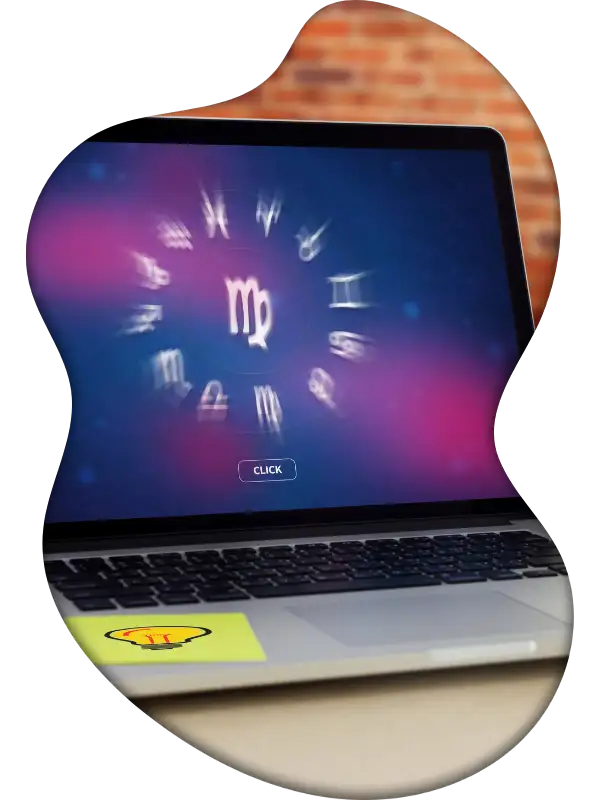Houses in astrology are sectors of the sky from the eastern to the western horizon, each governing different areas of life: marriage, money, health, and more.
In this article, you will learn about the appearance of the houses in the horoscope, their locations, how they work, and what they govern.
[toc]
How Do Houses Work in Astrology?
Astrological houses direct the influence of planets on specific areas of life.
For example, Jupiter outside any house shows:
- men among people,
- tin among metals,
- money and luxury items among possessions,
- high status within the social hierarchy,
- science and law among professions,
- liver and lungs among organs of the body,
- and more.
It is incorrect to think that Jupiter in your natal chart will simultaneously express all its meanings. The astrological house (sector of the sky) in which Jupiter is located will allow only certain aspects of its meanings to manifest, related to specific areas of your life. This is called the terrestrial determination of the planet. You can imagine that the astrological house "filters" the meanings of Jupiter.
Examples
- If Jupiter is in the house of hidden enemies, it will indicate your envious rivals among people of high social rank.
- Jupiter in the house of diseases will show illnesses related to the lungs and liver, as it governs these organs. However, it will not be linked to your finances.
- In the house of money, Jupiter will indicate your wealth and periods of financial growth. However, it will not show your liver.
- In the 4th house, Jupiter will point to your father among your parents, as it is associated with men. However, it will not reveal your financial status or social standing.
As you can see, thanks to the astrological house, Jupiter begins to "play" different roles.
Important Terminology. It is correct to say, "The house determines the planet's action" rather than "The planet influences the house."
What is the Ruler of the House?
The ruler or lord of the house is the planet that governs the sign located at the cusp of the house. Let's break down what this means.
Each zodiac sign "reflects" the energy of the planet it is associated with. For example:
- Capricorn reflects the energy of Saturn,
- Leo reflects the energy of the Sun.
Astrologers refer to this as rulership by sign, saying, "Saturn rules Capricorn," "The Sun rules Leo."
When a zodiac sign falls within an astrological house, especially at its cusp, the house directs the planet's reflected energy toward a specific area of life.
Example
If the cusp of the house of money is in Sagittarius, which Jupiter rules, the house focuses Jupiter's energy on finances, stocks, and bank deposits.
- If Jupiter is in a bad state (such as in exile or fall), it will lead to financial losses.
- If Jupiter is in a noble state (such as in its own sign), it will bring wealth instead.
Thus, the condition of Jupiter, which rules the sign at the cusp of the house of money, directly influences your financial well-being. Astrologers say that Jupiter rules money or is the ruler of the house of money.
[promoFreeCourse]
What Does it Mean When the Ruler of a House is in Another House?
Sometimes, a planet rules one house but is located in another. This is important because the energy the planet exerts from its body has a stronger influence than the energy reflected from the zodiac signs.
This means that the house where the planet is located concentrates its influence on the corresponding matters more than the house it rules.
Examples
- The ruler of marriage in the house of money indicates money coming from marriage.
- If the ruler of the house of money is in the house of marriage, it points to a spouse whose thriftiness or extravagance affects the household's wealth. The state of the planet will indicate whether it relates to savings or spending.
For more on how different houses determine the action of a planet with varying strength, read the article on the terrestrial state of a planet.
What Do Astrological Houses Look Like?
If you draw arcs from South to North, they will divide the celestial sphere into 12 parts. These parts are called primary astrological houses or spaces.
These dividing lines intersect the zodiac circle at 12 points, known as the house cusps. The segments of the zodiac circle between the cusps are called secondary houses of the horoscope.
Main Landmarks
- The First House begins in the east and is located below the horizon.
- The Seventh House starts in the west and is above the horizon.
- The Tenth House begins directly overhead and occupies the eastern part of the sky.
The 12 house cusps.
What are the Ascendant, Descendant, and MC?
In astrology, the following terms are used:
- Ascendant (ASC) is the cusp of the first house. It is the degree of the zodiac sign rising on the eastern horizon.
- Descendant (DSC) is the cusp of the seventh house. It is the degree of the zodiac sign setting on the western horizon.
- Midheaven (MC, Medium Caeli) is the cusp of the tenth house. It is the degree of zodiac sign that is directly overhead, between east and west.
- Imum Caeli (IC) is the cusp of the fourth house. It is the degree of zodiac sign that lies below the horizon, directly between east and west.
These four points are known as the angles of the chart.
What is The System of Astrological Houses?
The system of astrological houses is a way of dividing the celestial sphere into 12 parts. There are different systems, such as the Placidus system, the Koch system, the Regiomontanus system, and others.
You can learn more about the different house systems in this video.
Types of astrological houses.
What Do Houses Represent in Astrology?
Each house corresponds to a specific area of life and a category of things and circumstances related to that area.
Opposite houses usually have opposite meanings, making it easier to study them in pairs. Let’s start with the axis of the 1st and 7th houses.
[promoFreeCourse]
1-7 Houses
These houses are generally associated with the individual and the people they interact with as equals.
Specifically, they indicate:
- The individual, their health, talents, and place of residence (1st house);
- The people "opposite" them, with whom they interact as equals — partners, lovers, spouses, and enemies (7th house);
- The process of residing in one's place of dwelling, i.e., life itself and its security (1st house), and the process of "horizontal" interaction with others — love and partnership, or fight and competition (7th house).
2-8 Houses
Generally, these houses are associated with material resources — either their accumulation or liberation from them.
Specifically, they indicate:
- The process of accumulating or consuming material resources (2nd house) and the process of releasing them — disposing of waste, defecation, or death (8th house);
- Accumulated resources — money, property, and helpful people one can rely on (2nd house), or processed resources — waste and remnants (8th house).
3-9 Houses
Generally, these houses are connected to interaction with the environment—whether familiar or new (physical or informational). Specifically, they represent:
- Familiar territory (3rd house) and uncharted places (9th house).
- Basic knowledge, literacy (3rd house), and profound knowledge, science (9th house).
- Daily communications (3rd house) and higher forms of communication—religion, prophecies (9th house).
- Students (3rd house) and teachers (9th house).
4-10 Houses
Relative to horizontal social interactions (1st–7th houses), the axis of the 4th–10th houses is vertical. Therefore, in the broadest sense, it represents a person's social beginning and social peak.
Specifically:
- The fourth house represents the social beginning—lineage, ancestors, and inherited possessions, including land and homes.
- The 10th house represents the social peak—fame, recognition, profession—and the pinnacle of the social structure, including governors and state institutions.
5-11 Houses
In general, these houses are associated with pleasures — physical or emotional.
Specifically, they indicate:
- The process of physical enjoyment — sex, gourmet indulgence (5th house), or the process of emotional enjoyment — spending time with close friends (11th house);
- The fruits of enjoyment — children and the tangible results of creativity (5th house).
The 11th house is often considered in the context of the 2nd house from the 10th, representing resources and close circles related to professional activity — allies and income from one’s professional activity.
6-12 Houses
Generally, these houses are associated with constrained circumstances — both major and minor.
Specifically, they indicate:
- Hard, subordinate labor for low pay or those who perform such functions on our behalf — servants and domestic animals (6th house);
- Significant constraints — life in exile, captivity, imprisonment, or physical infirmity, as well as their sources: illnesses and hostile environments, including hidden threats and secret enemies (12th house).
N.B.: Understanding the question context is crucial. Different houses will describe the same object depending on the context. For instance, if you were buying a car and trying to assess its quality, the vehicle is an item, the 2nd house. In a question about safe driving in that car, you are interested in the vehicle as a space where you are on the road. You are concerned about that place’s safety and your body’s safety—that’s a 1st house question.
Main Confusions with Houses
| Incorrect | Correct |
|---|---|
| 6th house—employment | Office work—10th house. Labor under duress (servitude, nursing the sick, cleaning cesspools, survival work—this is the 6th house) |
| 2nd house shows health | 1st house shows health and the state of the body |
| 5th house shows lovers | 7th house shows lovers. Sex, things for pleasure, and children—this is the 5th house |
| 8th house—sex or spiritual transformations | Sex—5th house, death—8th house. There is no house for transformations |
| 12th house—monasteries | Only in times when monasteries were places of exile. Normally, they are places of prayer, 9th house |
| 4th house—the outcome of all things, particularly life. That is, death and the grave | 4th house shows burial places (cemeteries), but not the death of the native |
| 10th house—father | Family and lineage in general—this is the 4th house. In the patriarchal era, the 4th house was attributed to the head of the family, the father. The mother was assigned the 10th as the opposite of the father's house |
[promoFreeCourse]


